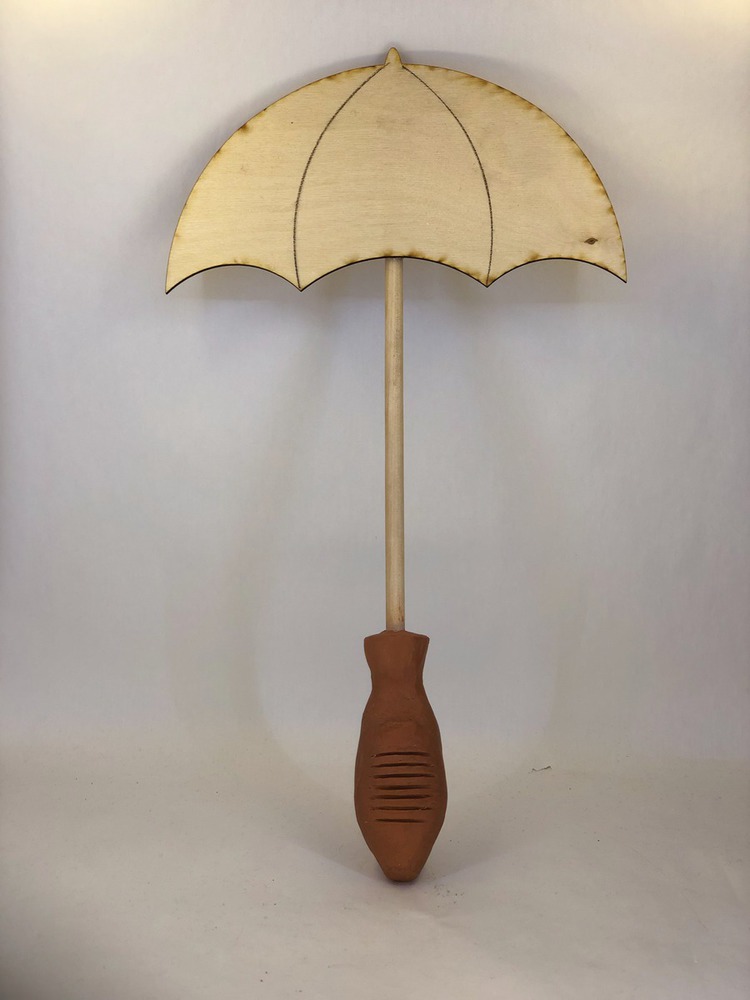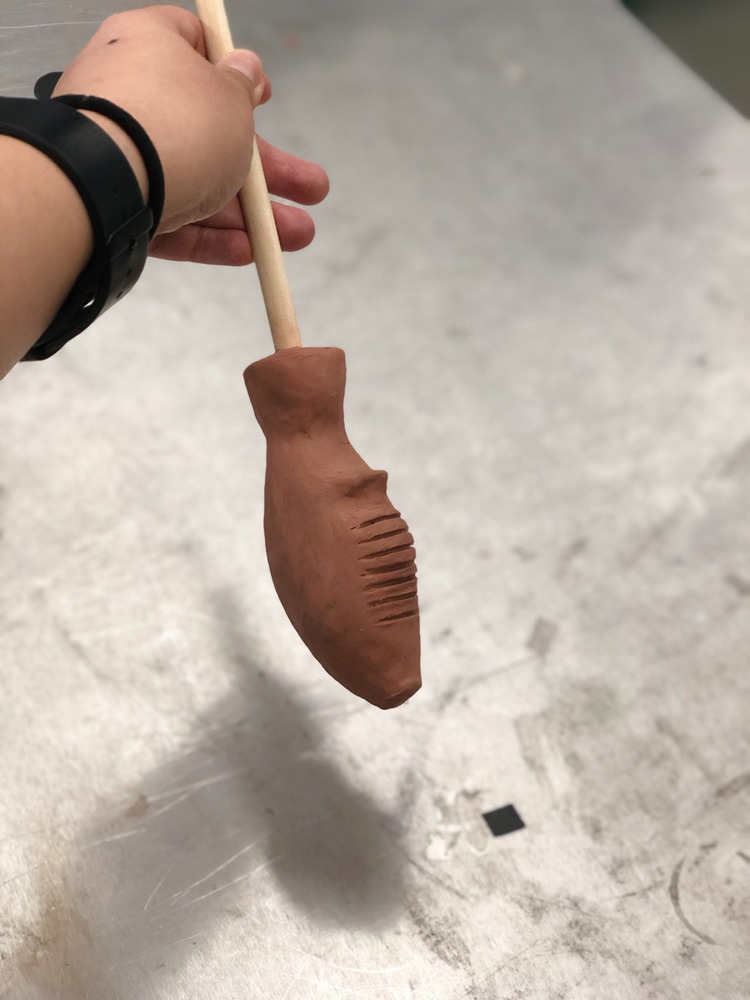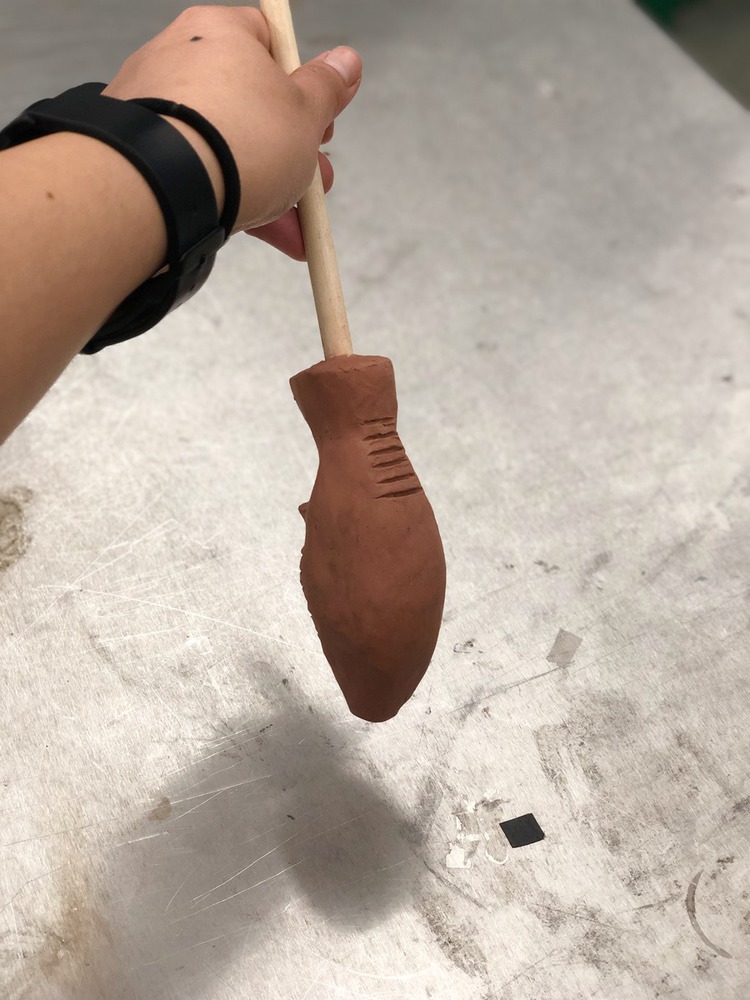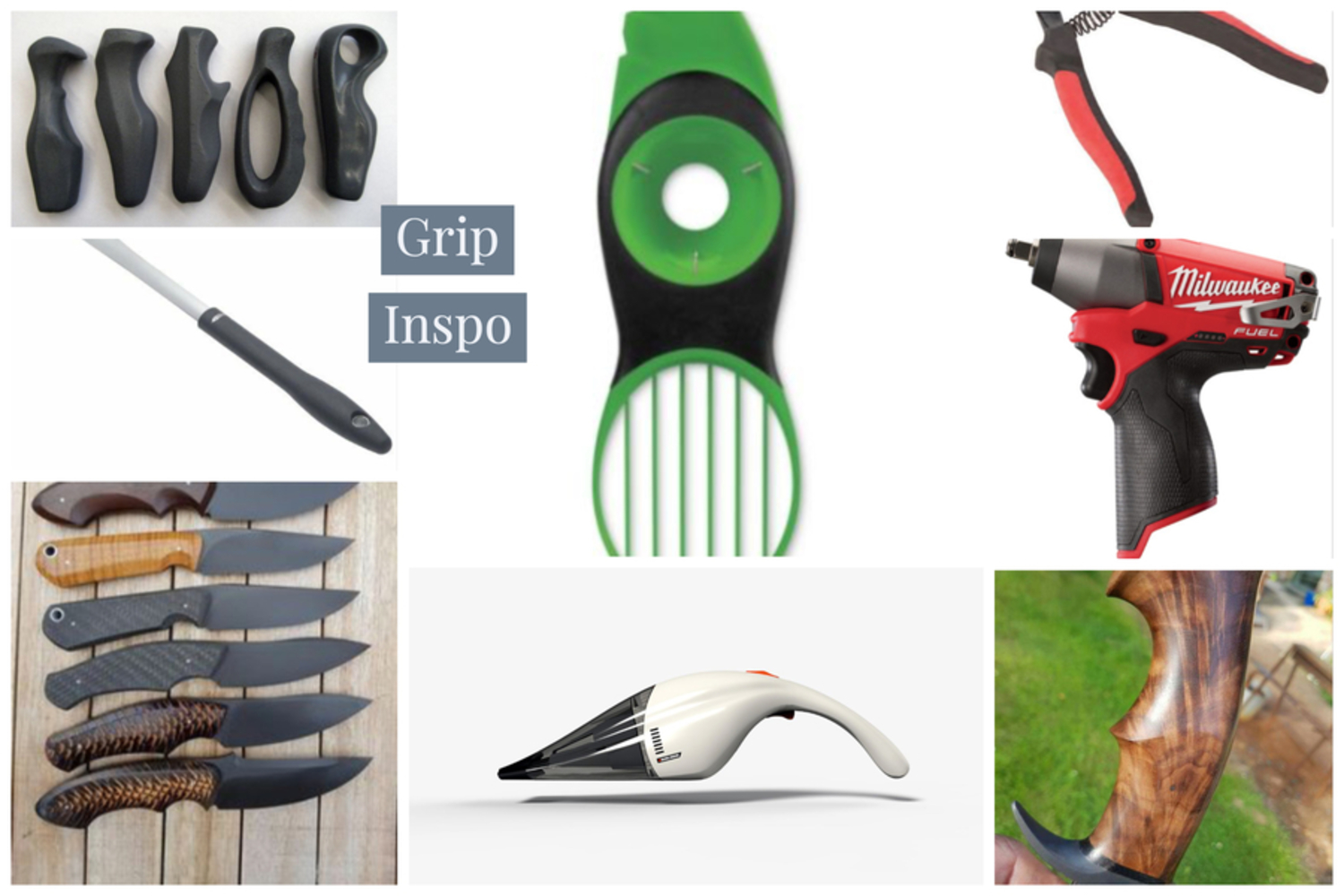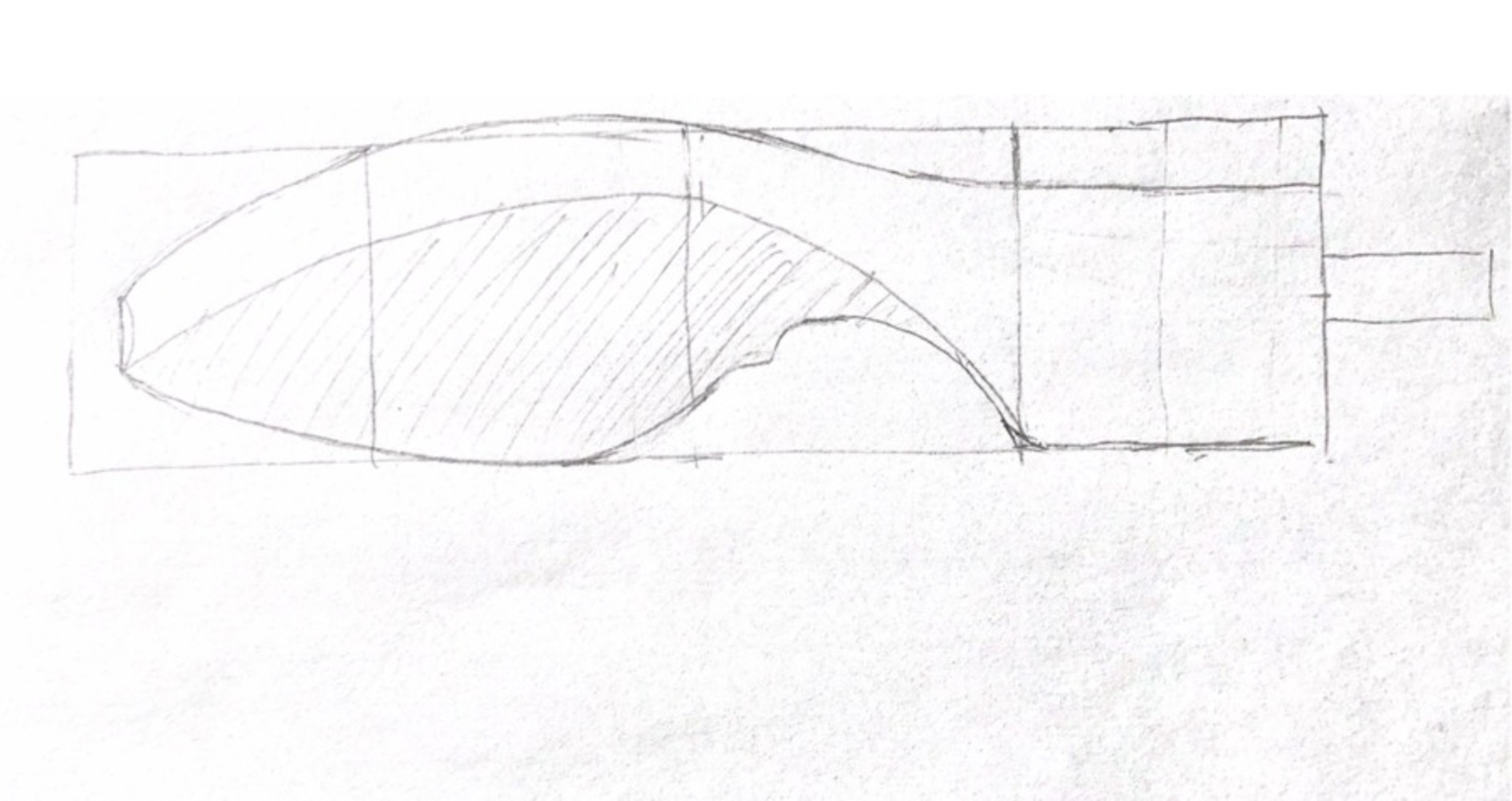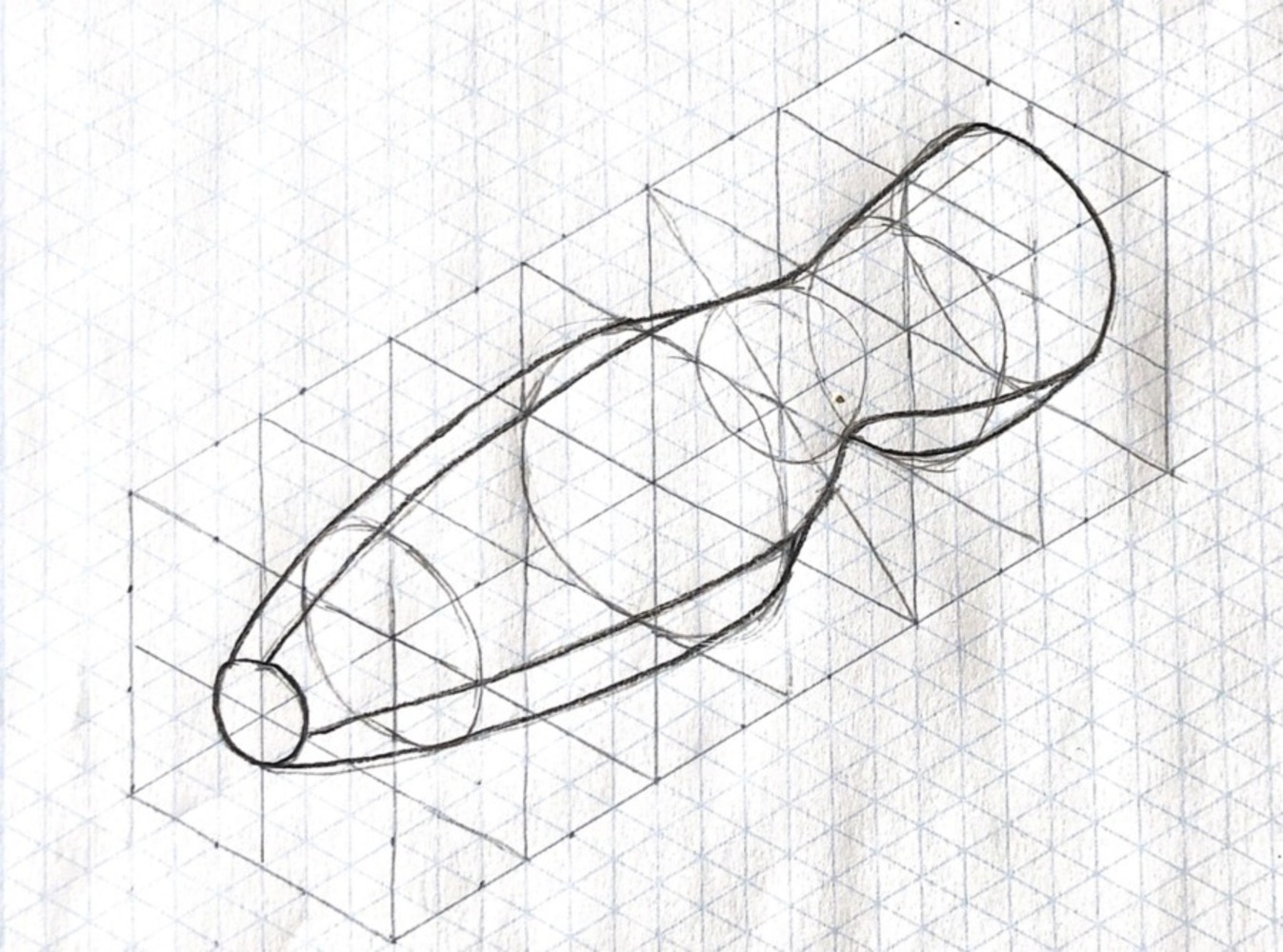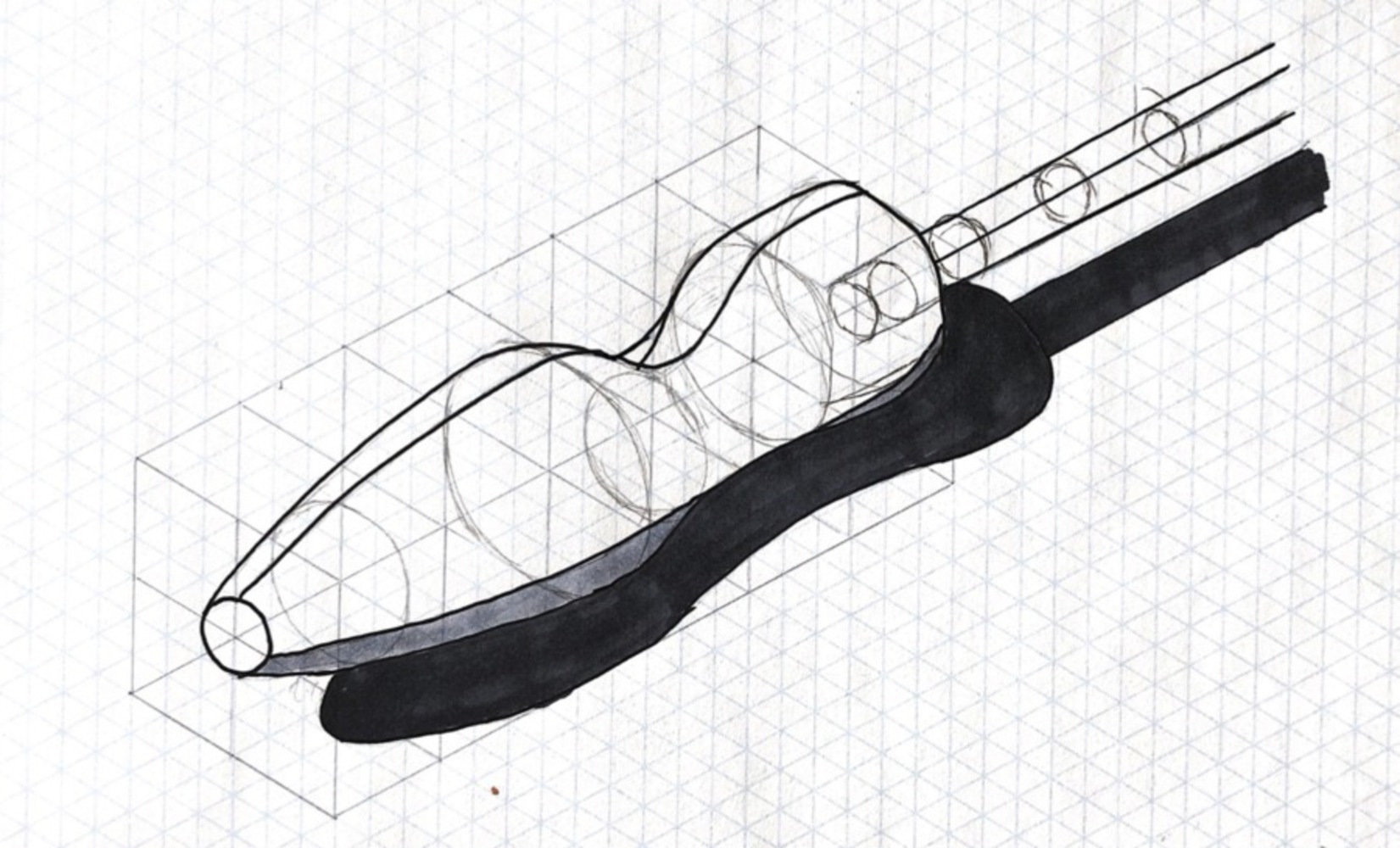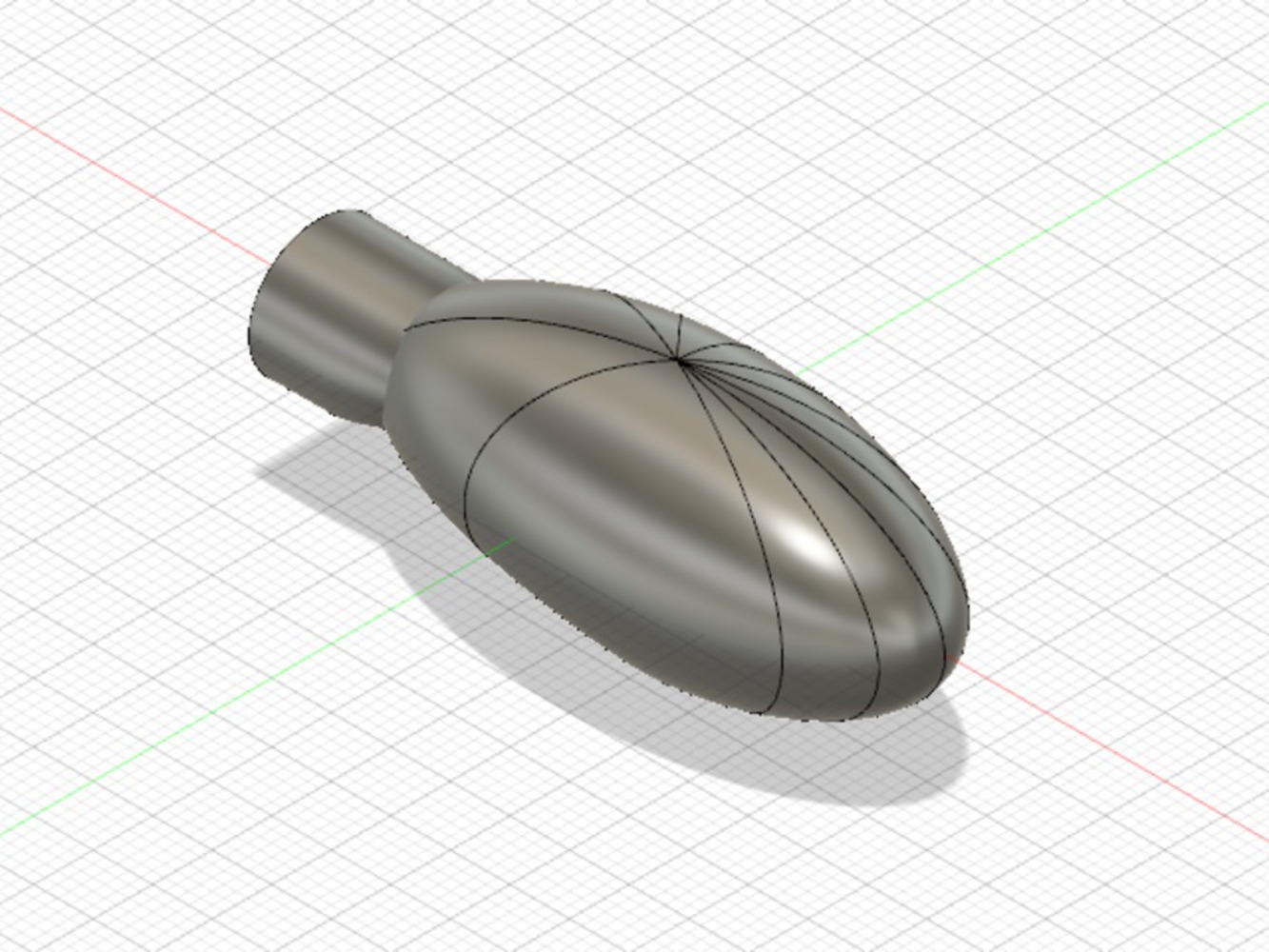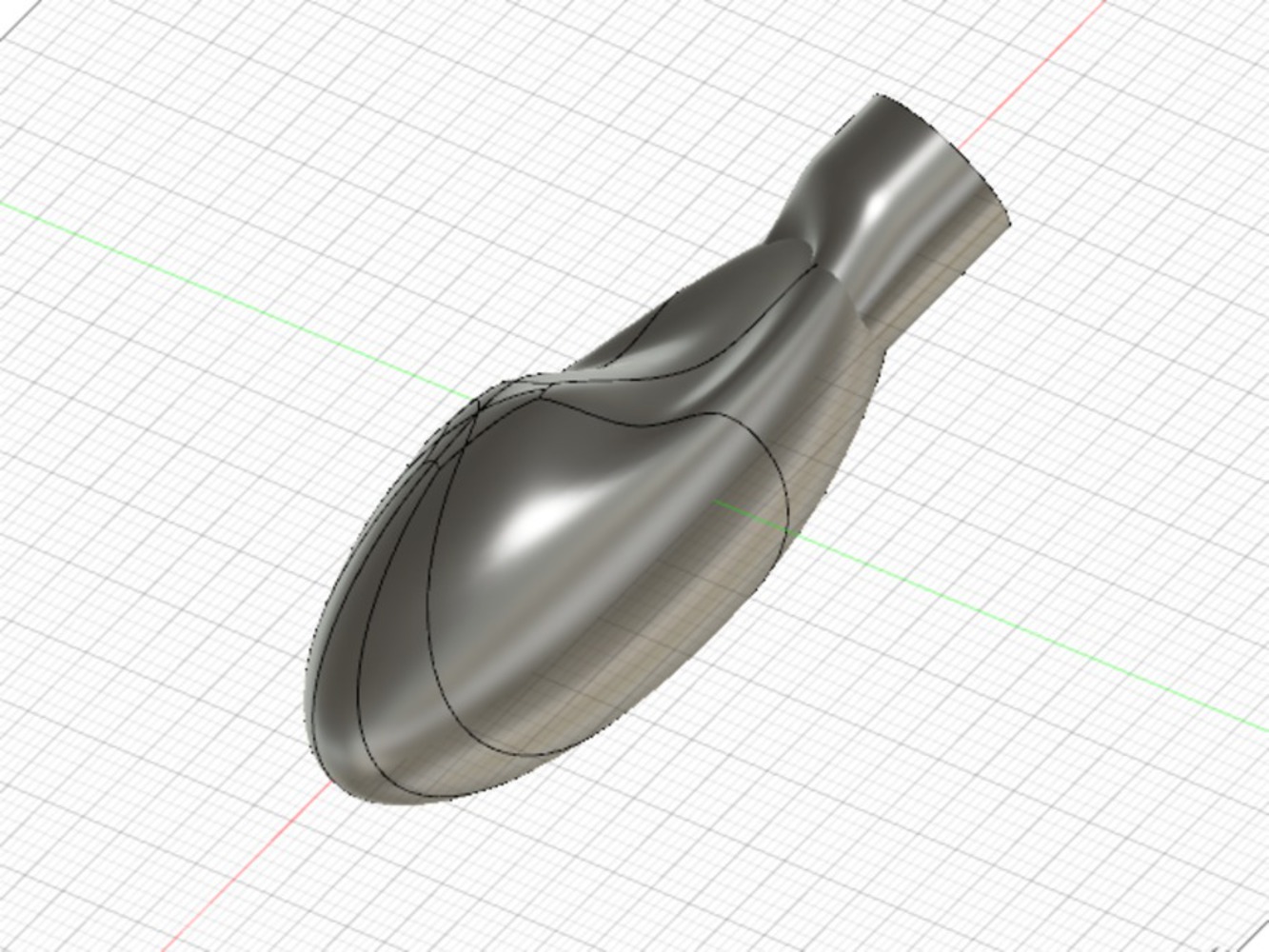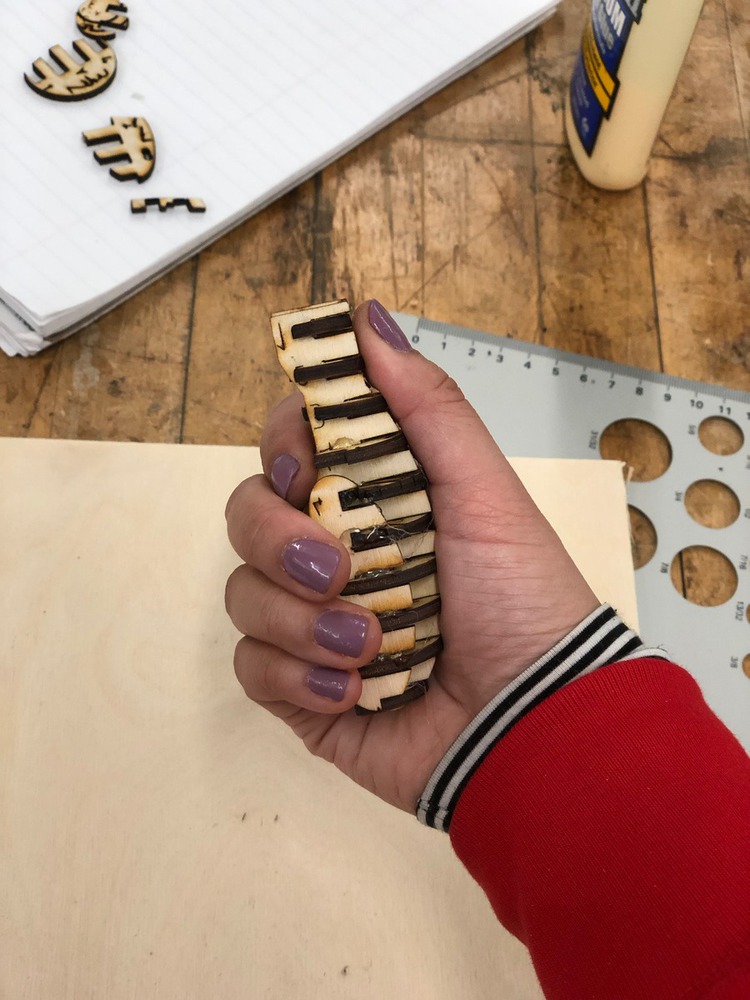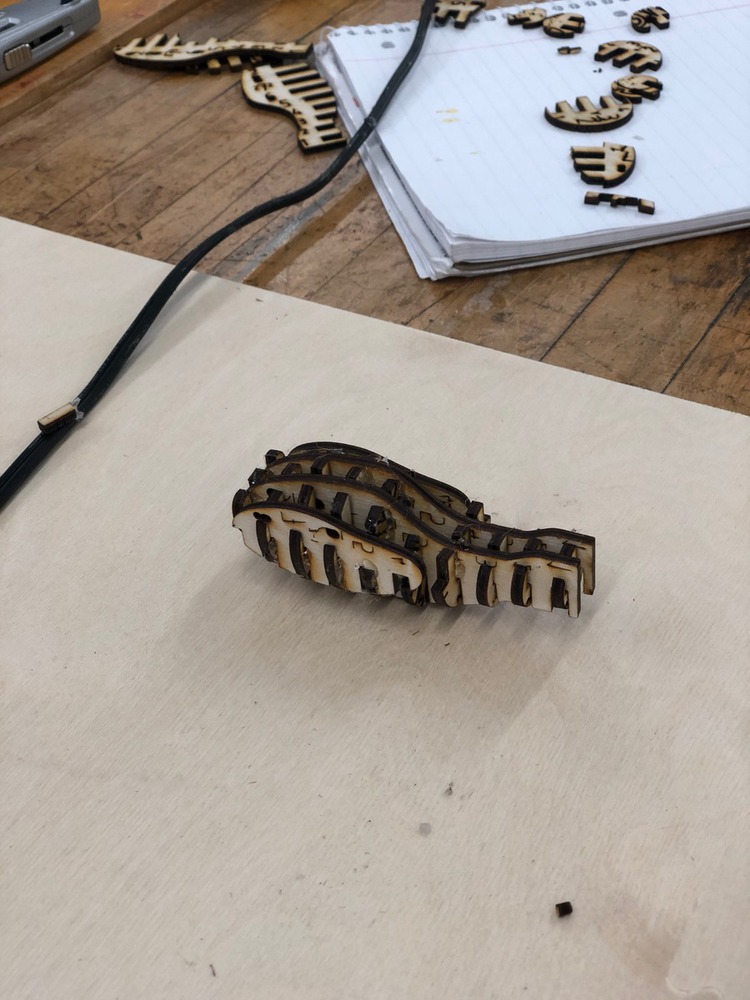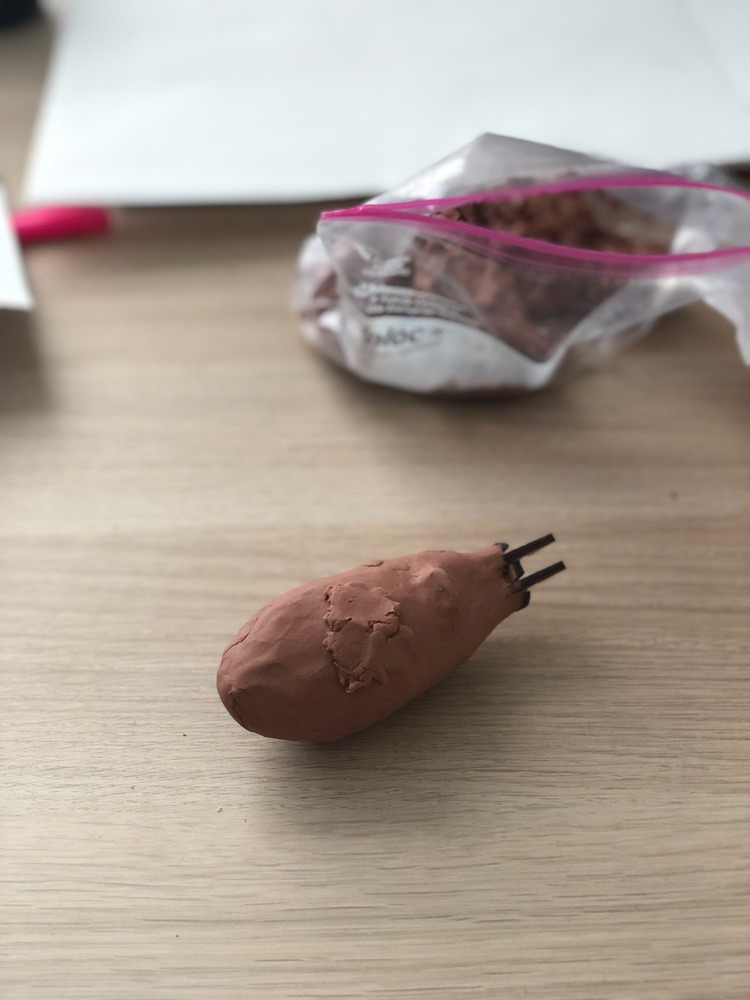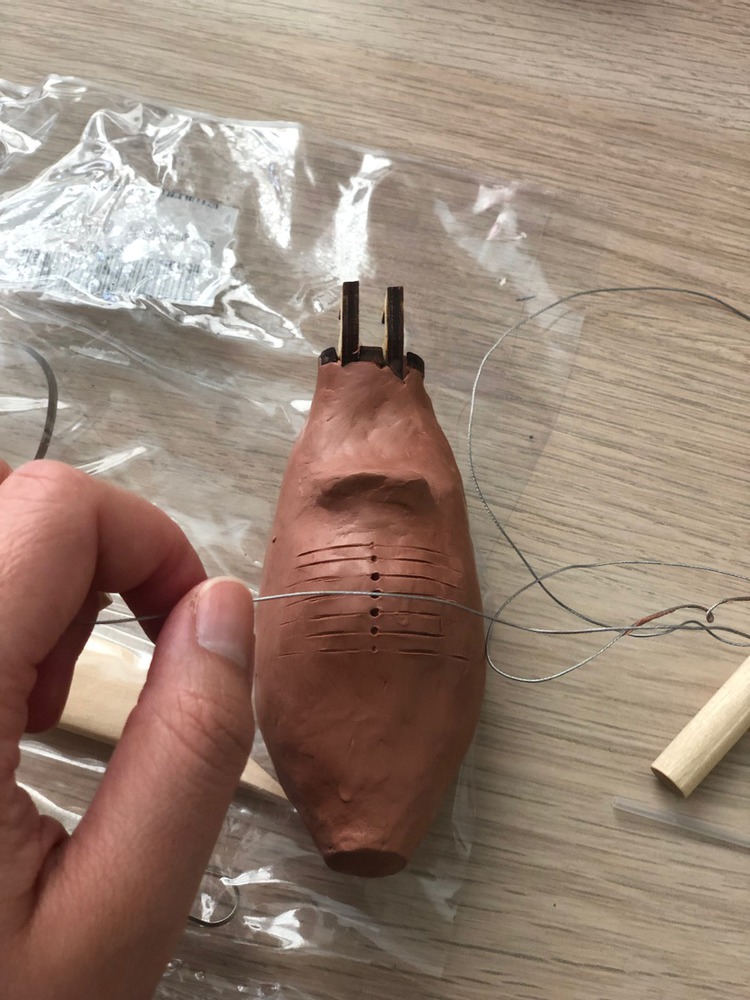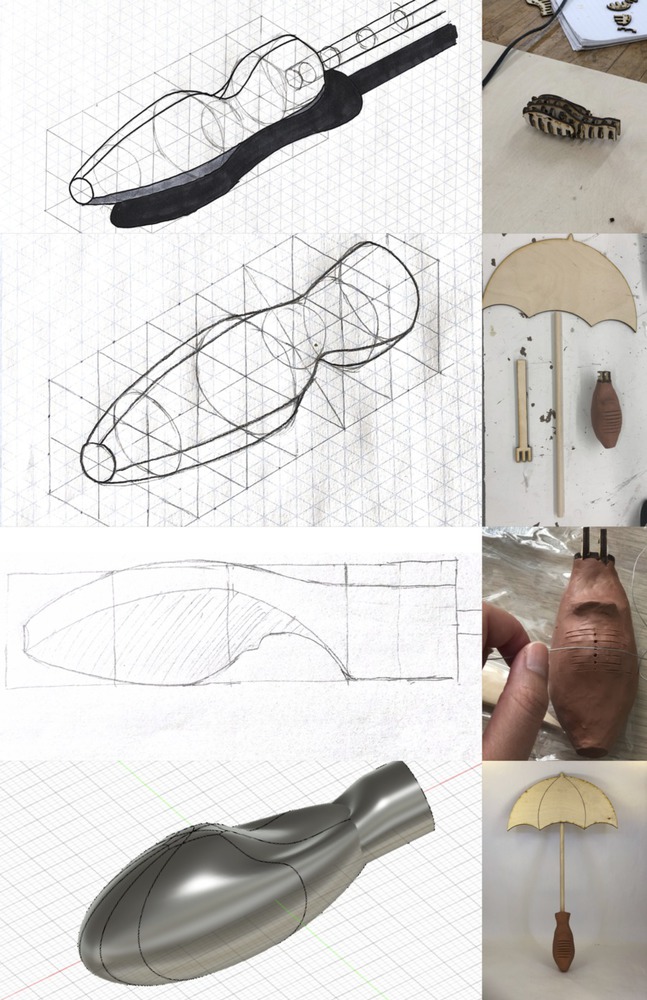Context and Solution
Having lived on the west coast my entire life, Pittsburgh weather was a drastic change from what I was used to. In particular, I found the rain unpredictable and varying from day to day. Sometimes it was in my face; sometimes it was pouring straight down. The umbrella I had purchased from CVS was uncomfortable to hold no matter what direction you were pointing it. This inspired me to make a handle that was not only ergonomic no matter which angle you were holding it at, but also gives you a stronger grip overall.
Below is the model of the handle I created. It has an elongated, rounded, and slightly forward-curved handle that matches the natural curvature of your hand. There are scores to make it more comfortable to grip, both on the front face and also where the thumb goes.
